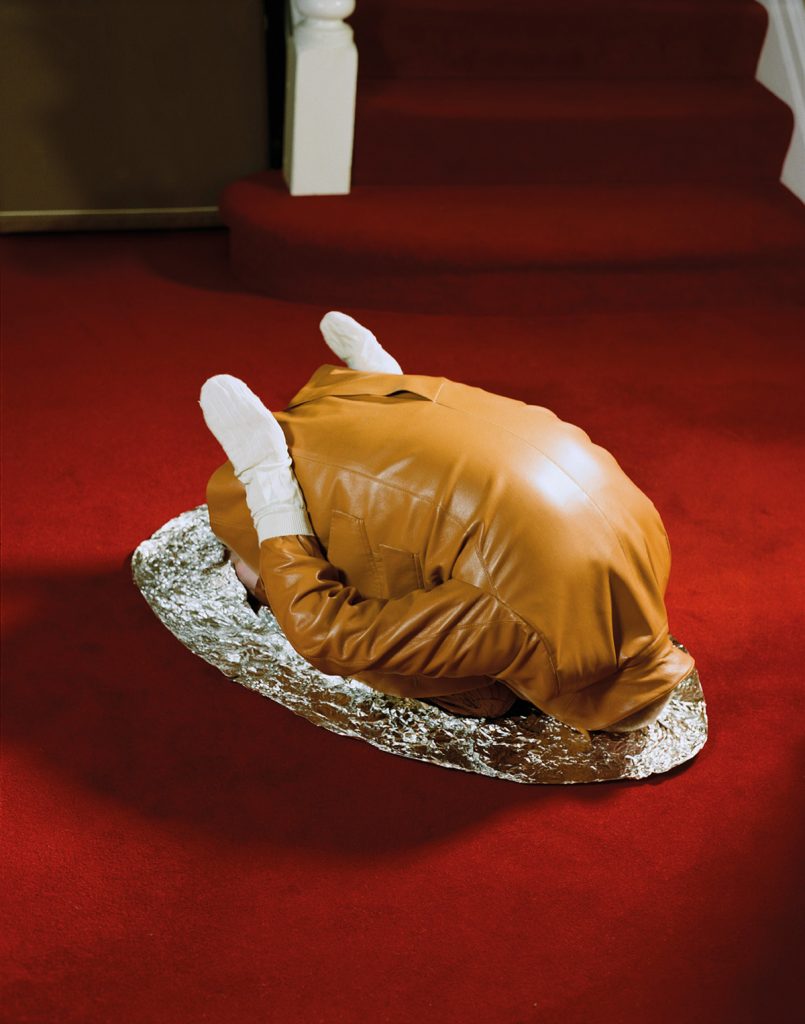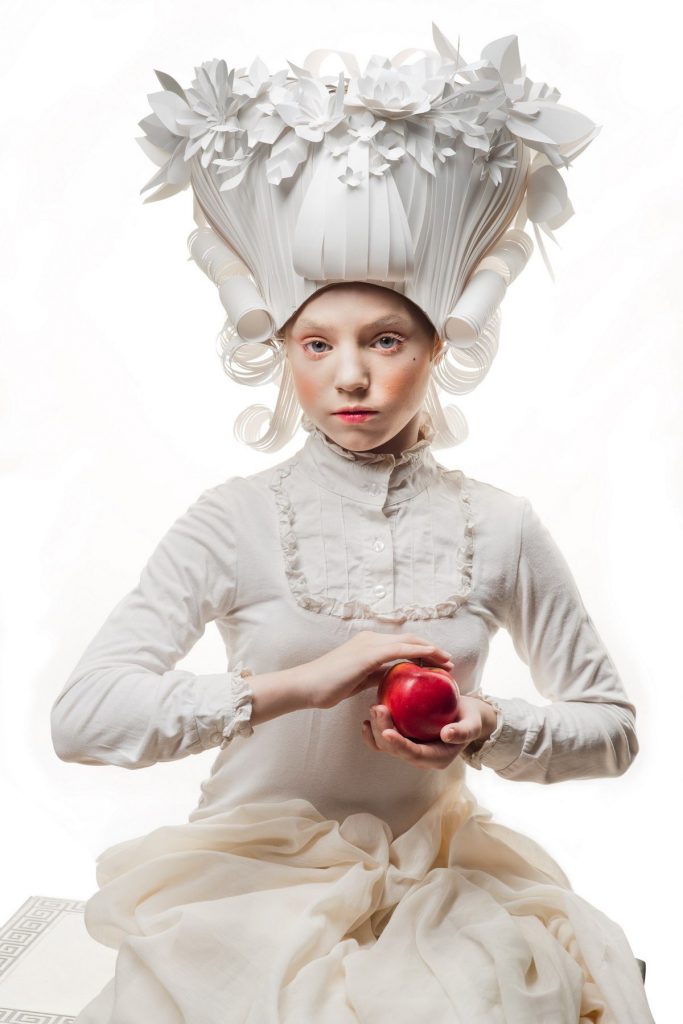In: fashion

Annie Collinge | Table For One | 2020
August 25, 2023Annie Collinge | Table For One | 2020
With styling and art direction by James Theseus Buck and Luke Brooks of Rottingdean Bazaar, the Table For One series was created for Luncheon Magazine, featuring the model Tin Gao.
There are a number of places to stand (or crouch, on your knees with your head tucked under, like the resting chicken ‘downward dog’ work by Collinge) in considering Table For One.
Some are more light-hearted (when I first encountered Collinge’s performative scenes, I was having the type of day where staying at home in a banana bag or sitting stoically as a snug, solitary tomato was a comforting concept. Table For One might mean being grateful to be left alone, that day). Other responses may be darker : perhaps these are incongruously bright, vibrant metaphors for loneliness and separation. Eating alone at a table for one is interpolated as isolation – and assumed to be by reluctance not preference – which feeds (sorry) into the history of how eating with others and communal meals are lauded as linchpins of social structure. This is – of course – debatable, as it has a rank stench of nostalgia, like those who lament the myth of ‘family dinner.’
I offer this as someone who often goes to movies alone, or eats in restaurants alone, but have been told I’m ‘extroverted’ in other social interactions.
When considering art, I often cite what Jeanne Randolph describes as the ‘amenable object’ : it’s a ‘vessel’ that we pour our own experiences into, and thus construct its meaning in collaboration with the artist. Fashion falls within this, and is also a manifestation of art and social history : its a history we wear and perform. As with art history, it is sometimes subversive, sometimes explicit. Table For One exists within that space.
“Puppetry, dolls and larger-than-life costumes populate the images of London-based photographer Annie Collinge. Visual trickery abounds, as if Alice had just stumbled upon a magic potion in Wonderland, with scale (the very large and the very small) frequently distorted. The human body becomes a foil to its surroundings, offsetting imaginative surroundings that conjure the escapist storybooks of childhood. A head appears amidst a mushroom patch, or else a gloved hand clutches at a disembodied head. Like the best fairytales, these images carry as much menace as they do whimsy.” That quote is from an interview with Collinge : more of that conversation can be read here.
More of Collinge’s artwork (sometimes collaborative, sometimes solo) can be seen here and here.
~ Bart Gazzola
Read More
Asya Kozina | Baroque Paper Wigs, 2016
October 14, 2022Asya Kozina | Baroque Paper Wigs, 2016
Historical wigs always fascinated me, especially the Baroque era. This is art for art’s sake aesthetics for aesthetics, no practical sense. But they are beautiful. I made a series of wigs. Paper helps to highlight in this case the main form and not be obsessed [with] unnecessary details.
There is something both decadent and timeless about Kozina’s work. The idea of a peformative lens comes into play – as these intricate, hand made (with no digital tools) ‘wigs’ only attain their ultimate beauty when worn by one of Kozina’s models, and the rest of the team comes together (meshing together, perhaps, like the paper in the artist’s constructions) to produce a moment that has as much to do with art historical tropes, as seen in the paintings of Jacques Louis David or Caravaggio, as it does with contemporary couture and fashion. The artifice of the apple, the pale face perfectly dotted with subtle spots of rouge, the winsome look eschewing eye contact in one scene and the feigned precociousness of the model looking directly at us in another all suggest this might be a Jean-Honoré Fragonard (more late Baroque, with a touch of the playfulness of Rococo) except for the stark palette, only broken by the red of the apple.
I think of Fragonard as the old Russian Imperial court often looked to France for its ideal, and there’s a sentiment of the elaborate, exotic Ancien Régime to Kozina’s many works: another act of imitation from an artifice of pretension that was, of course, all about social class and cultural capital.
But Kozina does more than just mimic: several bodies of work – such as the more ballistic Baroque Punk or more erotic Eve – employ the history of fashion as a starting point for contemporary considerations and conversations.
More of her work can be seen on IG at @asya_kozina or at her site.
The photographer for this work is Anastasia Andreeva, with assistance from Dina Kharitonova. The makeup artists are Marina Sysolyatina and Svetlana Dedushkina.
~ Bart Gazzola
Read More
Recent Comments